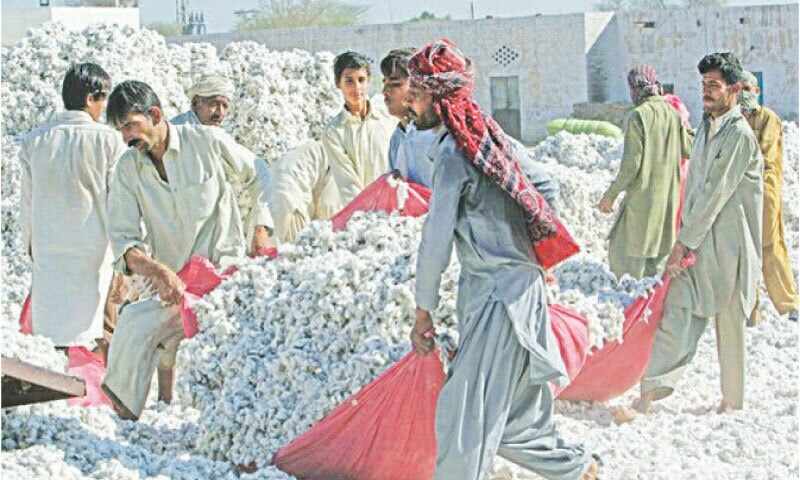By Amjad Mahmood Israel Becomes Muay
LAHORE: Pakistan’s cotton sector is grappling with a severe crisis as production has plummeted from a record 15 million bales to just 5.5 million, raising alarms across the textile value chain. The shortfall has significantly strained foreign exchange reserves as the country increasingly relies on imported cotton to meet the demands of its textile industry.
Industry stakeholders are urging both federal and provincial governments to enforce crop zoning regulations, reduce input costs for farmers, and slash the high 86pc sales tax on the cotton ginning sector. At the same time, some voices within the sector are calling for a renewed push for hybrid cotton cultivation, a move met with both hope and scepticism.
According to recent reports, around 150 acres of hybrid cotton have already been sown in Punjab and Sindh, shortly after the federal government approved the import of hybrid cotton seed. However, concerns persist about its viability, especially when compared to the more successful hybrid varieties of rice and maize.
Ihsanul Haq, Chairman of the Cotton Ginners Forum, recalls that in 2010, two multinational seed companies conducted hybrid cotton trials in collaboration with the Pakistan Central Cotton Committee (PCCC), but the results were dismal. Yields from the hybrid seeds were reportedly 60pc lower than those of traditional Pakistani varieties. Subsequent trials in Punjab and Sindh over the past decade also failed, primarily due to the incompatibility of the seeds with local climatic conditions.
Punjab moves to approve high-yield varieties despite fibre issues
More recent experiments over the last four to five years with single-gene, double-gene, and triple-gene cotton varieties have produced inconsistent and disappointing outcomes. While in theory, the yield should increase with each gene addition, in practice, the double- and triple-gene seeds have underperformed, even trailing behind single-gene varieties. Experts attribute these failures to changing climatic conditions, particularly the rising temperatures in traditional cotton-growing zones.
Despite the attention on hybrid seeds, a conventional variety known as SS-32 has emerged as a standout performer over the past decade. Growers report that it has consistently yielded better than other varieties, even in the face of environmental stress caused by sugarcane cultivation and unfavourable weather. Currently, SS-32 is cultivated on more than 50pc of the total cotton area. However, it has not been officially approved by federal or provincial authorities due to concerns over its shorter and weaker fibre — despite its high productivity.
A recent PCCC report for the 2024-25 cotton season confirms that SS-32 delivered the highest yield nationwide, while the much-promoted single-, double-, and triple-gene varieties recorded the lowest.
In what may be a pivotal policy shift, the Punjab Seed Council (PSC) has reportedly decided to approve any cotton variety yielding more than 40 maunds per acre, regardless of whether it meets fibre length standards. If implemented, this approach could boost national cotton output, though it may compromise on fibre quality.
Growers continue to criticise the lack of enforcement of crop zoning laws, which has led to widespread sugarcane cultivation in cotton-designated areas. The unchecked establishment and expansion of sugar mills in these zones are also cited as major contributing factors. “These practices, along with adverse weather and ill-conceived government policies, are the real reasons behind the decline in cotton production,” says Mian Umair Masood, General Secretary of the Pakistan Kisan Ittehad.
Offering a more measured view, Dr Asif Ali, Vice-Chancellor of MNS Agriculture University in Multan, warns against drawing parallels with the success of hybrid rice and maize. He believes that hybrid cotton may only succeed if introduced selectively and under strict biosafety controls. Citing a failed attempt to import hybrid cotton from China during Dr Zafar Altaf’s tenure as PARC chief, Dr Asif notes that farmers will only adopt hybrid seeds if there is a clear return on investment — such as spending Rs500 on seed that yields Rs50,000 in savings through reduced pesticide use and higher productivity.
He stressed the need for developing heat-tolerant seeds, given Pakistan’s unique climatic conditions. “Pakistan has in the past achieved higher yields than India using open-pollinated varieties, even though India relies on hybrid and GMO seeds,” Dr Asif said.
Published in Dawn, July 6th, 2025
